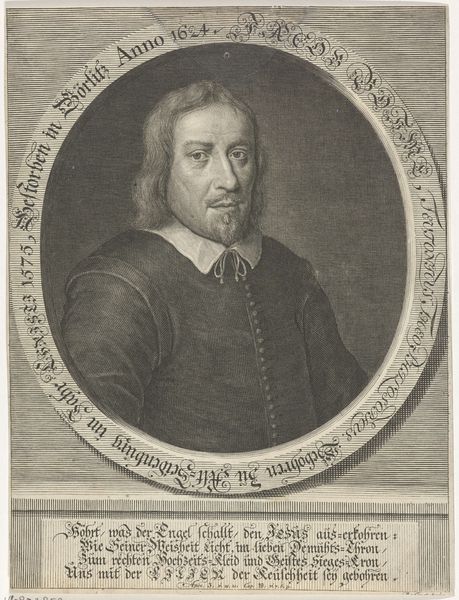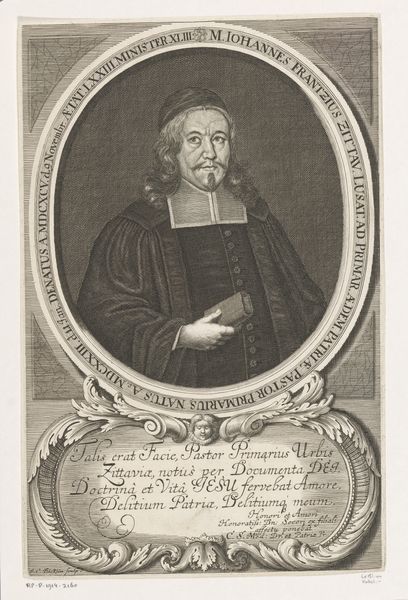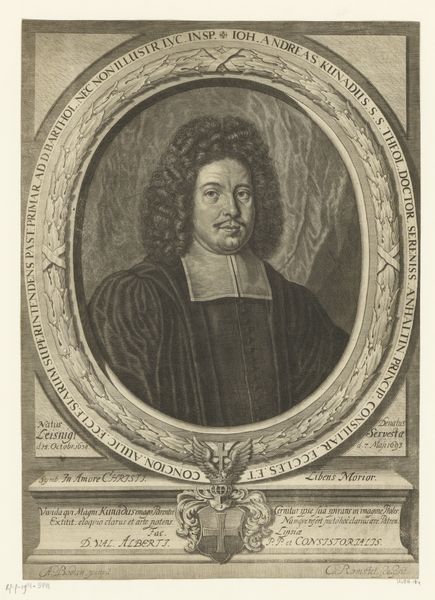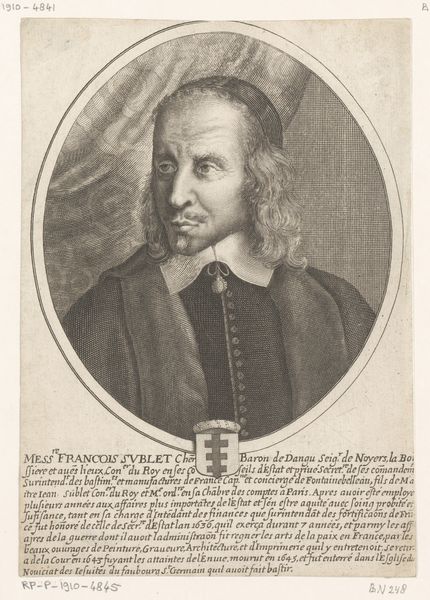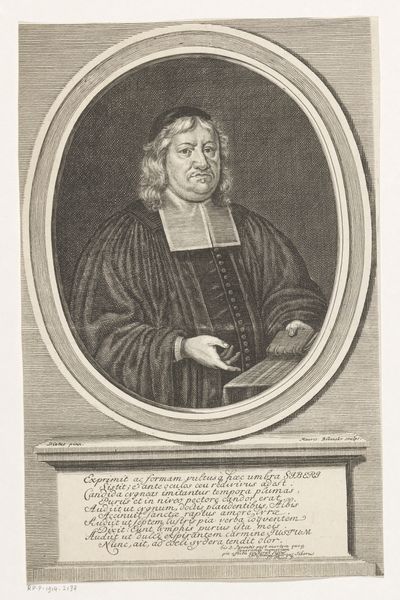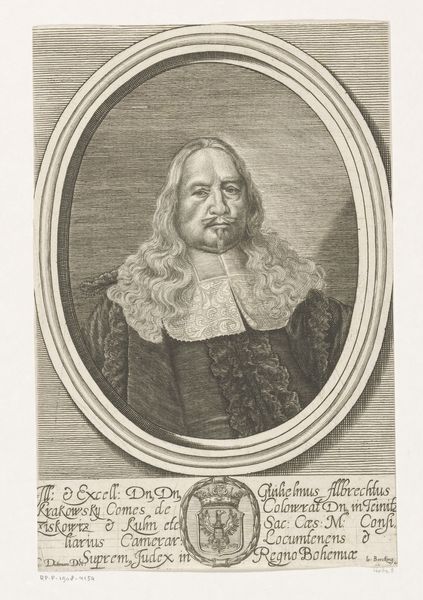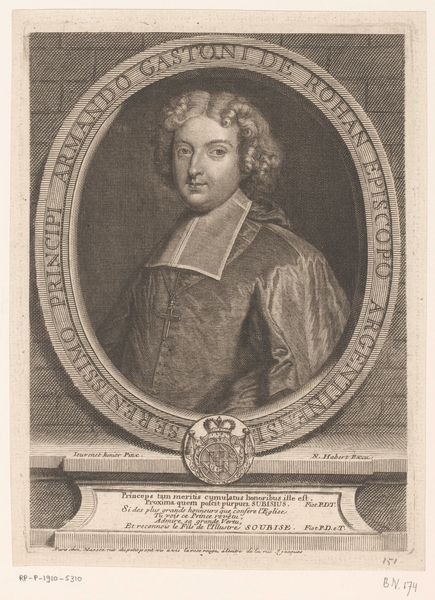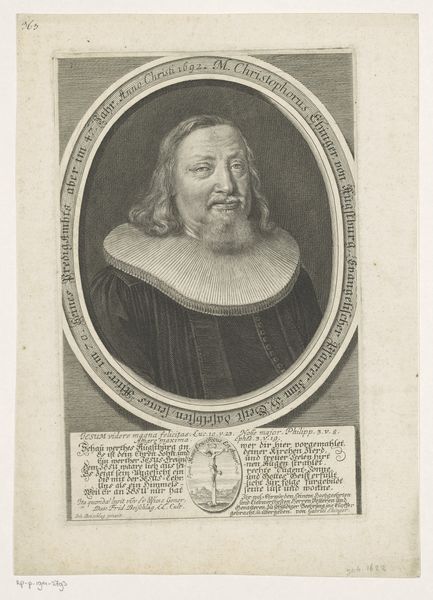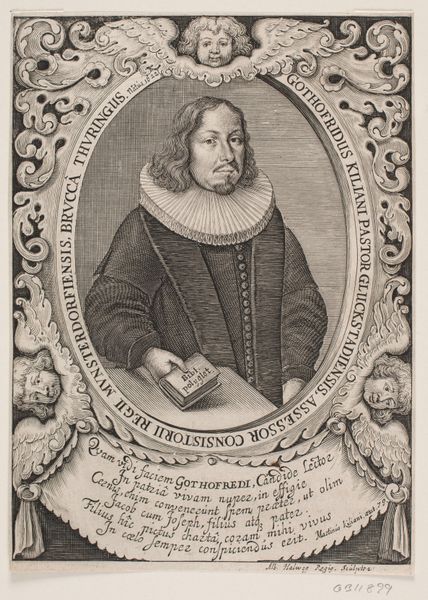
Vera Effigies Guilielmi Burton / L.L. Baccalaurei 1657 - 1658
0:00
0:00
drawing, print, engraving
#
portrait
#
drawing
#
baroque
# print
#
men
#
engraving
Dimensions: Sheet: 8 11/16 × 5 5/8 in. (22 × 14.3 cm)
Copyright: Public Domain
Editor: So, here we have "Vera Effigies Guilielmi Burton / L.L. Baccalaurei" by Wenceslaus Hollar, created around 1657-1658. It’s an engraving, currently housed at the Met. I'm really struck by the level of detail achieved through printmaking. How should we think about this portrait? Curator: Let's consider the labor involved in its production. Engraving was a highly skilled craft, demanding meticulous handiwork. The choice of printmaking allowed for wider distribution and consumption of Burton’s image. How does that impact its meaning, compared to, say, a unique painted portrait? Editor: That’s an interesting point. It's less about this particular man than the idea of him, disseminated and reproduced. Was printmaking generally viewed as “lesser” than painting at the time? Curator: Often yes. But examining the materiality challenges that hierarchy. The very act of translating an image into lines etched onto a copper plate speaks to the artist’s mastery of their medium, forcing us to acknowledge skill in production. Look closely, how would you describe the materiality here? Editor: Well, it's quite stark - black lines on white paper, but with tremendous variations in tone achieved by the density of those lines. It’s fascinating how much detail can be rendered that way. It makes me think about accessibility too. This image could have been reproduced many times, meaning more people would have had access to it compared to an original painting. Curator: Precisely! Think about the social context – who would be commissioning and consuming such prints? The burgeoning merchant class perhaps? People on the make? How does this democratized visual representation change our understanding of the subject's status, William Burton himself? Editor: That’s so true; thinking about production really unlocks a different way of analyzing the art. I hadn't really considered the economic and social implications tied to the art's creation and dissemination, beyond simply admiring the finished product. Curator: Exactly! Hopefully, this reminds you that art’s meaning is constructed, in part, through the material and processes that brought it into being.
Comments
No comments
Be the first to comment and join the conversation on the ultimate creative platform.
